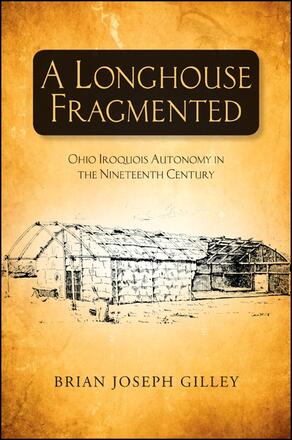
A Longhouse Fragmented
Ohio Iroquois Autonomy in the Nineteenth Century
Alternative formats available from:
Tells the social history of the Iroquois people of Ohio during the buildup to removal.
Description
A Longhouse Fragmented is a historic ethnography of the Ohio Iroquois and, in particular, of the people known as the Seneca of Sandusky during the early nineteenth century. Using contemporary social theory and interdisciplinary methodologies, Brian Joseph Gilley tells the social history of the Native peoples of Ohio before and during the sociopolitical buildup to removal. As culturally, geographically, and socially displaced Iroquois, the Sandusky Iroquois were fragmented away from American historiographical constructions of Iroquois social history by the American Indian academic establishment. This fragmentation makes the early cultural history of the Ohio Iroquois an ideal foil through which to consider how normalized interpretations of social history come to appear real and have real effects for the subject societies well into the twentieth century. These stories are intended to begin an overdue conversation about the effects of a unified Iroquois history congealed around highly specific categories of knowledge.
Brian Joseph Gilley is Associate Professor of Anthropology and the Director of the First Nations Educational and Cultural Center at Indiana University Bloomington. He is the author of Becoming Two-Spirit: Gay Identity and Social Acceptance in Indian Country and the coeditor (with Qwo-Li Driskill, Chris Finley, and Scott Lauria Morgensen) of Queer Indigenous Studies: Critical Interventions in Theory, Politics, and Literature.
Reviews
"This book is groundbreaking in both its content and its theoretical orientation. Reframing the story of the Sandusky Senecas' removal from a tragic endpoint to an incident in a much longer history of indigenous translocation marks a truly original intervention in the scholarship on Iroquois history, and also sheds new light on a little-known chapter in the history of Indian removal." — Jon Parmenter, author of The Edge of the Woods: Iroquoia, 1534–1701